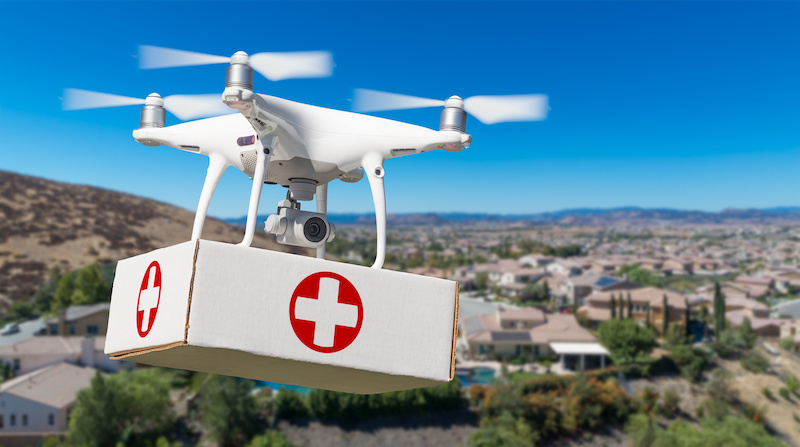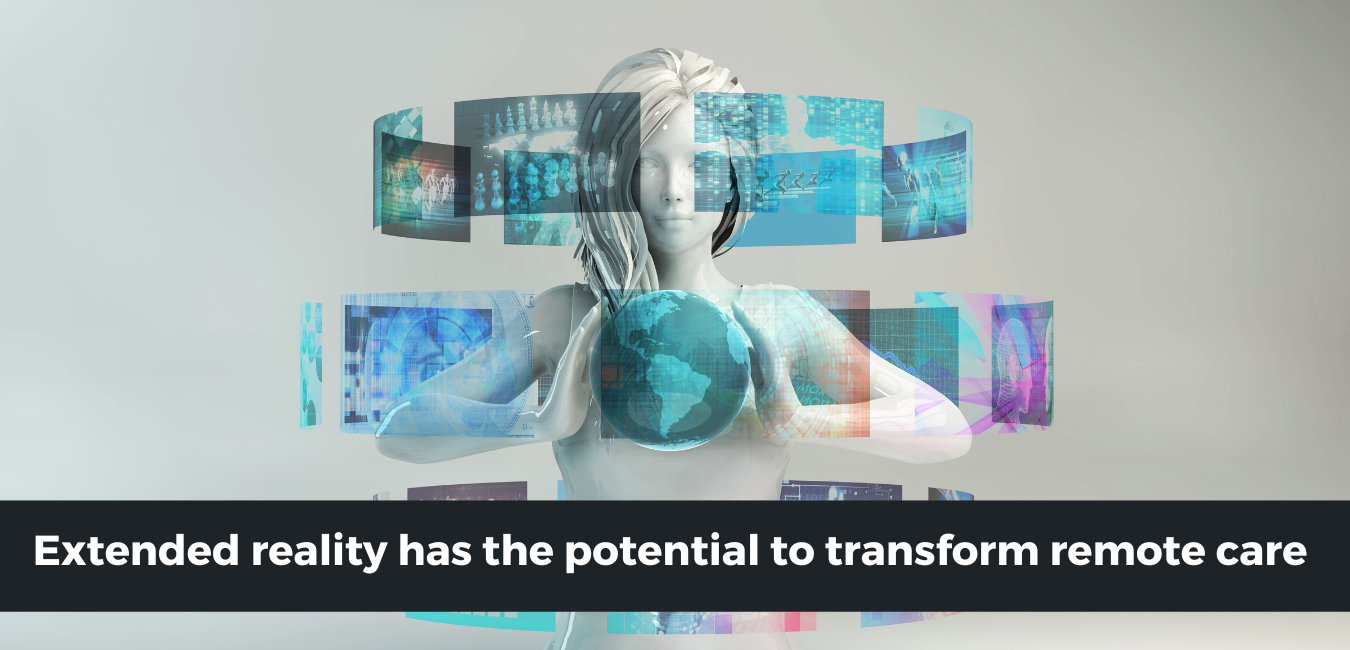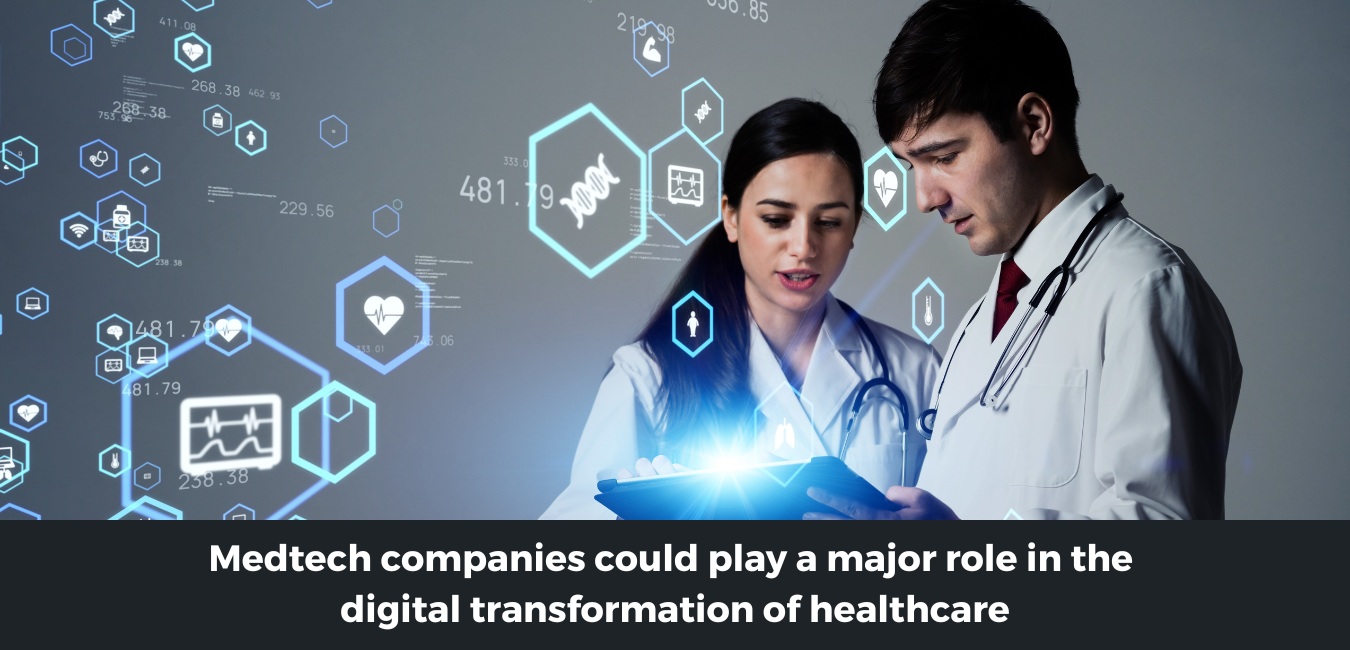Medical Delivery Drones: Growing adoption and changing landscape of healthcare delivery

“Drones are being used to combat the coronavirus in a variety of ways. Any of these applications are very dubious. Others are more important, such as the use of delivery drones. However, the use of cargo drones in the event of a pandemic should be questioned. Being more important does not automatically imply that all cargo drone ventures would have a positive effect.”
The current health-care system in the United States is a jumble of disparate elements (health plans, hospital systems, pharmaceutical companies, medical device manufacturers). We anticipate that by 2040, the patient will be at the forefront of the health-care paradigm. Interoperable, always-on data will encourage closer collaboration among industry stakeholders, and incumbents and new entrants will deliver new service combinations (disruptors). Interventions and therapies would almost certainly be more effective, less complicated, less invasive, and less expensive.
Health can be described holistically as a state of complete well-being that includes mental, social, emotional, physical, and spiritual well-being. Consumers will not only have access to accurate information about their own health, but they will also own their health data and play a key role in making health and well-being decisions.
What does the future hold for health care?
We are just about 20 years away from the wellness future we foresee, but health in 2040 will be a world apart from what we have now. We can reasonably expect digital transformation—enabled by radically interoperable data, artificial intelligence (AI), and accessible, stable platforms—to drive most of this transition, based on emerging technology. We hope that, unlike today, treatment will be coordinated around the patient rather than the agencies that currently drive our health-care system.
Today, a healthcare provider will digitally appear on a screen and, in most cases, make a fair diagnosis and offer appropriate guidance based on the results of available investigations. The definition of distance has lost its significance. Indeed, geography has morphed into history! Having medicines, vaccines, blood, or even biological samples for investigations available in truly remote areas, on the other hand, is a major restriction. Drones are constantly being used in healthcare today to reach out to the unreached and render isolation relative, rather than absolute. The term "inaccessible" will lose its significance over time. This review introduces the reader to yet another example of healthcare's capacity for innovative disruption.
Drones in the medical sector
We are just beginning to understand how UAVs can be used in healthcare logistics, just as the Wright brothers did not envision the space shuttle when they built their aircraft. We're currently using medical drones to:
- When time is of the essence, deliver emergency medications.
- In areas where healthcare infrastructure is inadequate, provide life-saving assistance. The timely supply of blood supplies to women haemorrhaging during childbirth in remote areas of Africa can literally mean the difference between life and death.
Drones and logistics in the lab: Implications and Advantages
One field where healthcare drones are already making a difference is lab logistics, as previously reported.
Diagnostic testing is heavily used to guide healthcare decisions in developing countries. About 70% of medical decisions in the United States, according to some figures, are focused on lab-based clinical research. With so much riding on the outcome of medical tests, drone deployment helps to smooth out the flow of samples into clinical laboratories by ensuring that specimens arrive more regularly. Drones' ability to reduce processing times is beneficial not only to lab quality, but also to patient outcomes by delivering test results to physicians more quickly.
Drone technology is rapidly evolving, and it is critical to build the infrastructure and resources necessary to ensure proper handling and trust in their use for medical product delivery. Traditional stability testing methodologies must be extended to account for the unique stresses that may be experienced during drone transportation, such as vibration, g-force, rapid changes in pressure, humidity, and temperature excursions, all of which may affect the essential material properties of medicines. In addition, the effects of recent geopolitical transformations within Europe, such as Brexit, will cause long-standing medical supply chains to shift.
The three major application areas in which drone delivery of medicines would have the greatest effect are as follows. These are not mutually exclusive, and the best AUVs for these missions can differ depending on the location and type of medication or medical device to be transported. Drones are especially well-suited for delivering medications to emergency situations, within the urban environment, and over geographically difficult terrain, due to their speed, low cost, and versatility in traversing physical barriers.
When delivering life-saving drugs to emergency situations during the golden hour, speed and accuracy are critical. Additional characteristics are needed to conduct emergency deliveries when medical personnel are not present. These abilities include the ability to hover and analyse the situation, as well as the ability to communicate specific instructions prior to the release of pharmaceutical products. The consistency of the drug must be ensured in all cases, and the effect of drone failure on patient safety must be carefully modelled.
Antivenom injections based on antibodies, for example, are responsive biopharmaceuticals, and first responders may still attempt to administer the antidote if the instruments used to deliver the drug are destroyed by the drone dropping the medicine near to the emergency. If the stability of the active molecules has been compromised, this may result in further complications for the patient.
The protection of the supply chain is critical for the delivery of medicines by drone in urban areas. Such facilities are an example of the final-mile distribution strategy, in which prescription goods are distributed over short distances from local centres, which may be pharmacies in strategic locations. This would minimise pollution and transportation time, as well as allow for the distribution of individualised medications to patients after they have been prepared at a clinic or hospital pharmacy. Normal transportation to a specific address, on the other hand, could attract the attention of those who want to steal the drugs and divert their use, so distribution packaging must include additional protection technologies to secure the contents if the supply chain's security is compromised. Nonetheless, in the future, urban drone delivery may be critical for the transport of chemotherapy, keeping vulnerable patients safe from hospital-borne infections.
Major Market Highlights: Medical Delivery Drones in various regions
- Because of the massive population, Asia Pacific is projected to have the largest market share. In the coming years, the growing trend of online grocery transactions in emerging economies such as India, China, South Korea, and Malaysia will drive regional market development.
- Currently, transporting dried blood samples from a healthcare facility to a lab for HIV testing takes about 11 days in most African cities. The results will take up to eight weeks to arrive. UNICEF led a project to use helicopter-style drones designed, developed, and programmed by Matternet to try to speed up HIV testing of infants.
- Zipline is able to sustain a "cold chain" in Rwanda by supplying blood and pharmaceuticals to remote areas in a matter of hours. Drones drop small packages from very low altitudes as they arrive at hospitals. Simple paper parachutes are used to lower the supplies. The drones return to their base of operations.
- Over the last year, Zipline has delivered “over 200 different forms of medical items to health facilities, including vaccines, blood, plasma, personal protective equipment (PPE), and antivenins.” A Zipline representative reported during a webinar on April 16, 2020 that the company's hub in Ghana was ready to deliver patient samples for rapid COVID-19 testing.
- F-Drones is transporting medicines to cargo ships, which is “critical in minimising human contact during the coronavirus pandemic,” according to the firm. Small boats and helicopters are commonly used for offshore deliveries, but the company claims that using its unmanned vehicles would save up to 80% of the cost and is more environmentally friendly.
- According to this article, the North Estonia Medical Center and technology company Threod Systems used a drone for the first time to transport a COVID-19 patient sample from Estonia's second-largest island, Hiiumaa, to Tallinn for testing. A ferry would have taken over an hour, while the flight took just 27 minutes. The drone in question has a range of 100 kilometres and can hold up to 1 kilogramme.
- An Italian drone company created a package that can be used to transport swabs and small medicines using an industrial drone. The drone can be outfitted with two boxes and can also fly in light rain to ensure that operations are not disrupted. The box's resistance ensures that the biological material does not come into contact with the surrounding environment in the event of an accident.
Middle East has a plethora of opportunities in the medical delivery drones
Drones are being used to transport blood supplies to remote parts of Africa in Dubai's humanitarian work, which is giving the aerial machines a good reputation.
Hundreds of drones are being shipped out of UPS's Dubai headquarters in collaboration with Zipline, a US robotics company. Given the potential growth of the drone industry in the region, GCC countries would be well advised to follow the UAE's lead in enacting their own drone regulations. When implementing any new unique laws focused on the use of drones in the healthcare sector, healthcare regulators around the GCC would need to work closely with aviation authorities. The DHA is enthusiastic about this emerging technology and has been collaborating with technology companies to encourage creativity in this field in order to provide healthcare solutions. It won't be long before such equipment is used to save lives on a regular basis. The successful deployment of drones for healthcare delivery in the GCC would enhance patient access and increase healthcare investment in the area.
Conclusion: Paving the way for healthcare with medical delivery drones
The initiative's next step will transform trials and testing into sky-based motion. The World Economic Forum co-organized a workshop with the State Government of Telangana at Wings India 2020, an event organised by India's Ministry of Civil Aviation and the Airports Authority of India, to bring together all important stakeholders to design a pilot project demonstrating the potential for drone delivery of medical supplies in India. This group is currently investigating how drones can aid India's response to COVID-19.
The Indian government's ability to build an encouraging policy framework for the use of drones to become commonplace would help ensure that the vast majority of the country's population has access to sufficient medical care. Recognizing the critical role that technology can play in the current crisis, the Ministry of Civil Aviation recently developed a special protocol for expediting drone flight requests for COVID-19-related applications via their online Digital Sky Platform. Initiatives in India and Africa will serve as a model for other countries to follow, helping them to develop a medical drone procurement system and bridge critical healthcare gaps.
To fully address the new opportunities that medicine distribution by drone provides to both patients and modern healthcare systems in all regions of the world, involvement of numerous stakeholders, including formulation scientists, packaging developers, logistics experts, regulators, and particularly pharmacists, will be required.
Drones provide a huge opportunity to fix supply chain issues in the healthcare industry, reducing stockouts and waste. Deaths from illnesses like dengue fever, conditions like postpartum haemorrhage, blood loss from injuries, and even time-critical organ grafting can all be prevented with quicker responses, better products, and more supply. By implementing advanced logistics systems in the sky, health system flaws, especially those felt in rural communities suffering from a lack of infrastructure and forecasted growth that outpaces investment, can be fixed and lives saved. However, we must always keep in mind that technology is not an end in itself, but rather a means to an end. Every revolutionary technology has its own set of limitations and drawbacks. These must also be considered.










